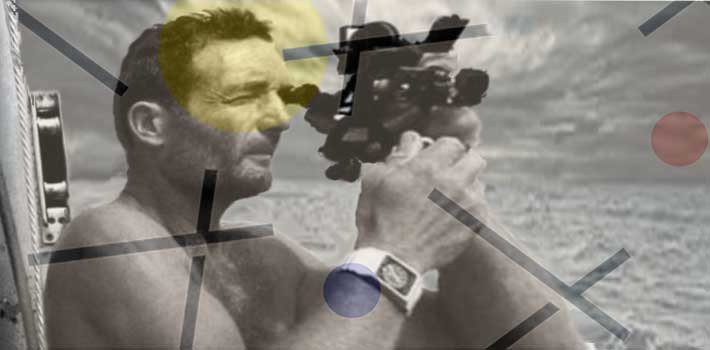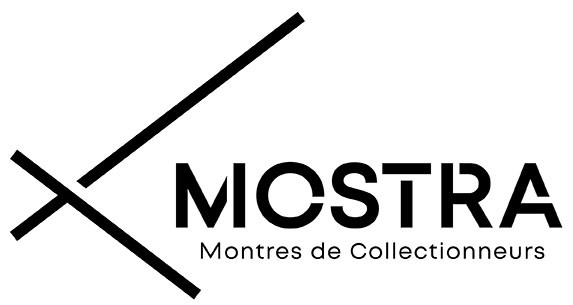
Navigating, following a marked route in order to arrive as quickly as possible at your destination is an art, which like any other requires a quality tool. Like the artist who relies on the precise line of his pencil, the navigator relies on his watch to navigate according to the planned courses by regularly reporting his position on the map thanks to his sextant pointed at a star or constellations. …
An anecdote little known to the general public, it was as a naval aviator that the ensign Eric Tabarly, will cover the most distance at the start of his career as a sailor. Between 1952 and 1960, Éric Tabarly joined the French Navy as a student pilot in naval aeronautics. He will make his first navigations on the Stampe SV-4 biplane on the naval air base of Khouribga in Morocco, then qualifies on long-distance planes at the BAN of Agadir by piloting the Beechcraft and the famous British four-engine Lancaster bombers of flotilla 25 F which equipped the post-war French Navy. One of his first staffing watches remains the Longines 5774, a National Navy staffing watch used in Indochina and in the post-World War II period before naval aviation pilots perceived the famous back-to-back chronographs. Breguet flight and others...

The aviator Eric Tabarly, with on his wrist, an Auricoste Type 20 chronograph (one of the models of watches provided to naval air pilots in 1954 with the Breguet Type 20 and Vixa with return to flight) will then serve during the war of Indochina within the 28F maritime patrol squadron equipped with long-range PB4Y Privateers.
During this period, he will carry out aerial navigations which are equivalent to thirty circumnavigations of the Earth, and will then be admitted in 1958 to the Naval Academy and where he will distinguish himself by his ability to navigate with the most precision during regattas by all the time by relying on an exceptional physical endurance capacity.
He will therefore be seconded by the Navy as a full-time officer to defend the colors of the Navy during regattas and international nautical competitions such as the solo Atlantic crossing or the Transpacific with Pen Duick 5. C It was at this point that Eric Tabarly would come across future young conscripts who would make up the future elite of French sport navigation, such as Titouan Lamazou, Jean Le Cam and Olivier de Kersauson, at the discretion of the crews around him.
It was during this period that Eric Tabarly successively wore a Lip Nautic replaced in the mid-seventies by an Omega Constellation Chronomètre de Marine, a watch revolutionary in its precision, also worn by Jean-Yves Cousteau and others. celebrities from the sea world.
This watch in the image of the navigator represents the most precise of wristwatches, a precision that will earn the Omega Constellation Mégaquartz 2.4 caliber 1516 the title of Marine Chronograph, a distinction until there only accessible to the bulky on-board clocks that equip the command posts of ships.
And it is indeed the foresight and the ability to use the best of the tools at his disposal to perform that Eric Tabarly stands out from the other great navigators of that time, an ingenuity that will allow him to remain at the top of the nautical competition. Lightening of its "Pen Duick" with the use of plywood, use of an alloy hull, development of the concept of rotating masts, planning hull, ballasts or even spinnaker sock and finally an innovation that allows the boat to fly on water: the foils of the “Paul Ricard” which will allow him to rack up records aboard a boat which gives him back the sensations of “man flying” from his beginnings.
Innovations that will mark the world of pleasure and sports marine and which are today reused by the manufacturers of pleasure boats, but which also equip the boats, true "Formula-One of the seas" which race the Vendée-Globe or win the America's Cup.
A legacy to the world of shipbuilding which will remain an example of transmission of performance and a quest for precision which will earn him to remain one of the men most inclined to know how to take advantage of the technical advances of his time.
And if there is a parallel to be drawn between his nautical exploits and the world of watchmaking, I would remember that at the start of his career in the 1950s, the pilot of the Naval Air Force Tabarly sailed through the air with his typical Auricoste chronograph 20, the bi compax model with two counters equipped with a return-in-flight mechanism and notched rotating bezel which will allow it to take the most precise headings in flight, it will then in the sixties use a Lip Nautic in its debut as a regatta champion Ski: watch equipped with state-of-the-art water resistance (characteristic essentially due to its Super Compressor case manufactured by the company E. Piquerez SA, the company known for having created the case for the Heuer Monaco). At the end of the sixties, it was with a Yema Yatchingraf Cruise that he won many races. Finally, in the 1970s, at the height of his glory, having made a lasting mark on the world of solo sailing, he used the most precise wristwatch in the world: the Omega Megaquartz 2.4 Marine Chronograph. Marine Chronometer equipped with the most precise high-frequency movement in the world: the Omega caliber 1516.


